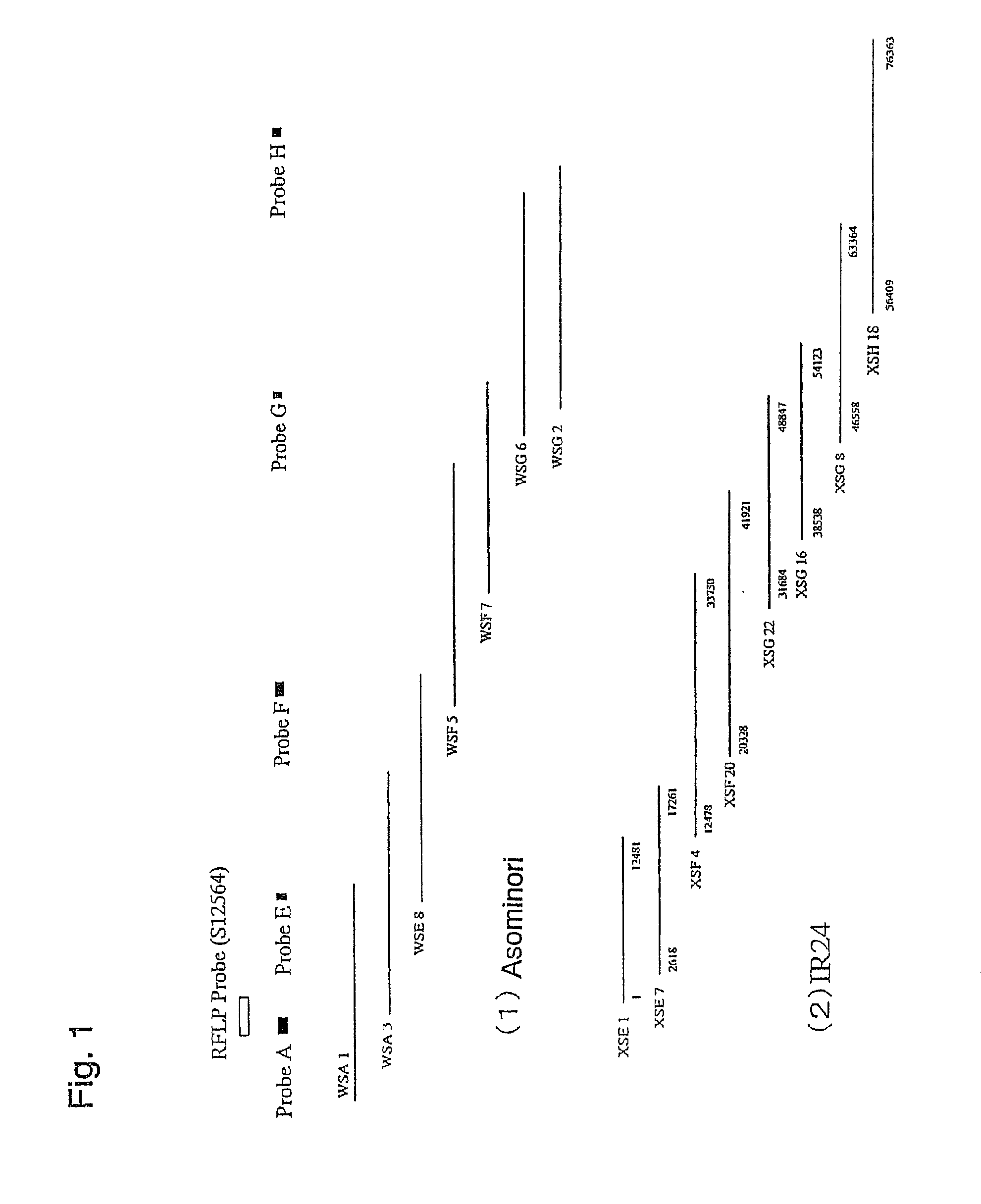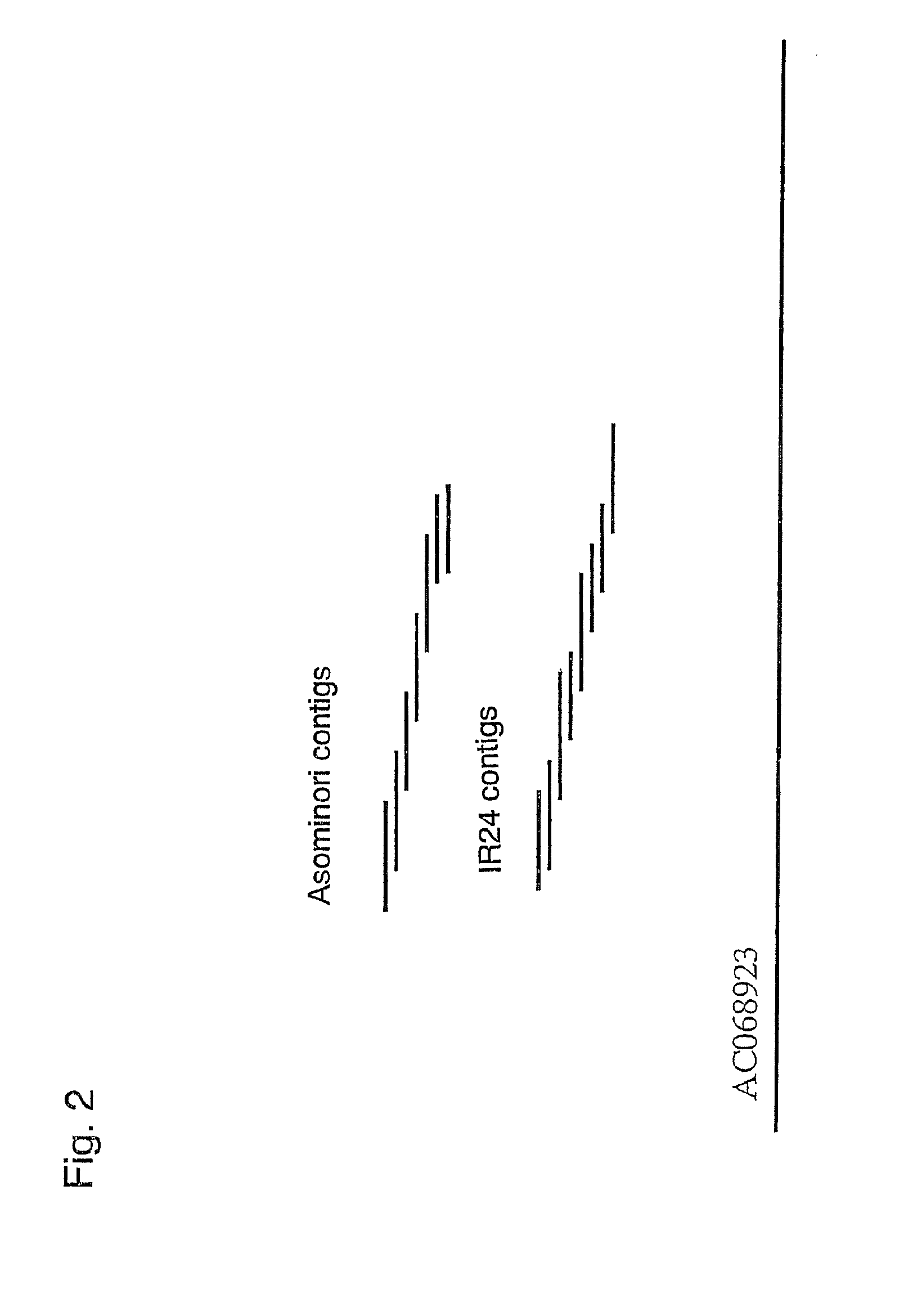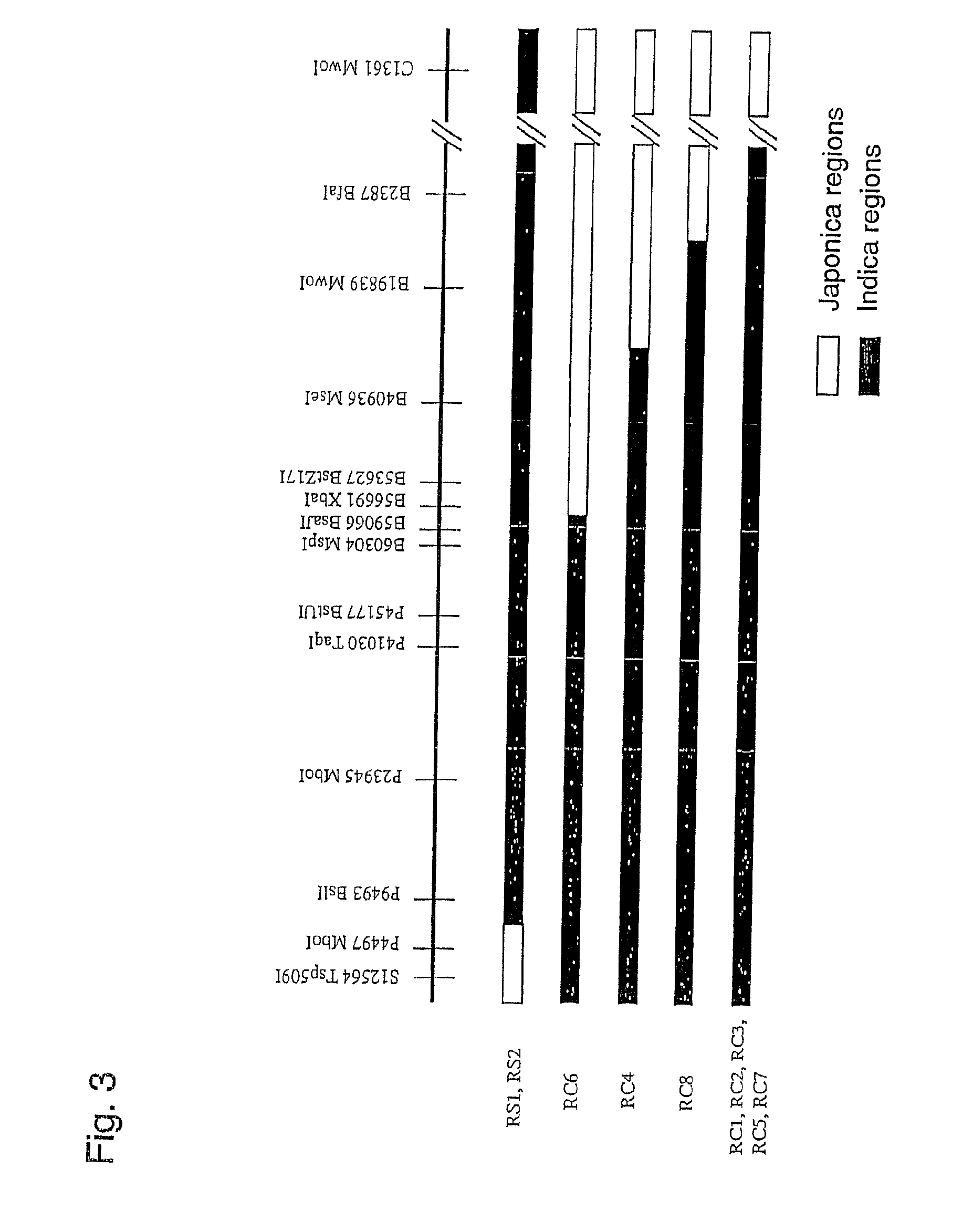Method for improving fertility of hybrid plants comprising placing fertility restorer genes into multiple gene loci
a technology of restorer genes and hybrid plants, which is applied in the field of hybrid plants, can solve the problems of poor cold hardiness of restorer genes rf-1, poor commercial application prospects, and inability to produce large quantities of hybrid seed on a commercial scal
- Summary
- Abstract
- Description
- Claims
- Application Information
AI Technical Summary
Benefits of technology
Problems solved by technology
Method used
Image
Examples
reference example 1
Acquisition of Recombinant Individuals Proximal to the Rf-1 Locus
(Materials and Methods)
[0192]DNA was extracted from each of 4103 individuals of BC10F1 population produced by pollinating MS Koshihikari (generation: BC10F1) with MS-FR Koshihikari (generation: BC9F1, heterozygous at the Rf-1 locus), and genotyped at the S12564 Tsp509I and C1361 MwoI loci in the same manner as described in Reference example 2 above. Individuals having a genotype homozygous for Koshihikari at the S12564 Tsp509I locus were regarded as those generated by recombination between the Rf-1 and S12564 Tsp509I loci, while individuals having a genotype homozygous for Koshihikari at the C1361 MwoI locus were regarded as those generated by recombination between the Rf-1 and C1361 MwoI loci.
[0193](Results and Discussion)
[0194]A survey of 4103 individuals revealed one recombinant individual between the Rf-1 and S12564 Tsp509I loci and 6 recombinant individuals between the Rf-1 and C1361 MwoI loci. The previous survey...
reference example 2
Chromosomal Walking
[0196](1) First Chromosomal Walking
(Materials and Methods)
[0197]A genomic library was constructed from the genomic DNA of Asominori japonica (not carrying Rf-1) using Lambda DASH II vector as described in Reference example 1 and tested by chromosomal walking.
[0198]PCR was routinely performed using total DNA of Asominori as a template in combination with the following primer pair:
[0199]
5′-atcaggagccttcaaattgggaac-3′(SEQ ID NO: 3)and5′-ctcgcaaattgcttaattttgacc-3′(SEQ ID NO: 4)
designed for a partial base sequence (Accession No. D47284) of RFLP probe S12564. The resulting amplification products of about 1200 bp were electrophoresed on an agarose gel and then purified by QIAEXII (QIAGEN). The purified DNA was labeled with a rediprime DNA labelling system (Amersham Pharmacia) to give a library screening probe (probe A, FIG. 1).
[0200]The library was routinely screened after plaques were blotted onto Hybond-N+ (Amersham Pharmacia). Single plaques were separated, after whi...
reference example 3
High precision Segregation Analysis
[0234](1) Development of PCR Marker P4497 MboI
[0235]Comparison between the genomic base sequence corresponding to the IR24 contig (SEQ ID NO:1) and the genomic base sequence corresponding to the Asominori contig (SEQ ID NO:2) determined in Reference example 2 revealed that the 1239th base of SEQ ID NO:1 is A while the 12631st base of SEQ ID NO:2 corresponding to said position is G.
[0236]For detecting this change, fragments of about 730 bp are first amplified by PCR from a region surrounding said position using the following primer pair:
[0237]
P4497 MboI F:5′-ccctccaacacataaatggttgag-3′(SEQ ID NO: 13)
[0238](corresponding to bases 853-876 of SEQ ID NO:1)
[0239](corresponding to bases 12247-12270 of SEQ ID NO:2) and
[0240]
P4497 MboI R:5′-tttctgccaggaaactgttagatg-3′(SEQ ID NO: 14)
[0241](corresponding to bases 1583-1560 of SEQ ID NO:1)
[0242](corresponding to bases 12975-12952 of SEQ ID NO:2).
[0243]The amplification products can be visualized by electrophor...
PUM
| Property | Measurement | Unit |
|---|---|---|
| temperature | aaaaa | aaaaa |
| temperature | aaaaa | aaaaa |
| pH | aaaaa | aaaaa |
Abstract
Description
Claims
Application Information
 Login to View More
Login to View More - R&D
- Intellectual Property
- Life Sciences
- Materials
- Tech Scout
- Unparalleled Data Quality
- Higher Quality Content
- 60% Fewer Hallucinations
Browse by: Latest US Patents, China's latest patents, Technical Efficacy Thesaurus, Application Domain, Technology Topic, Popular Technical Reports.
© 2025 PatSnap. All rights reserved.Legal|Privacy policy|Modern Slavery Act Transparency Statement|Sitemap|About US| Contact US: help@patsnap.com



